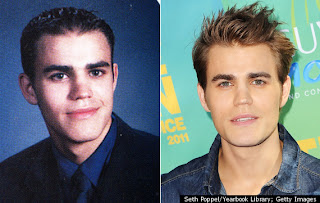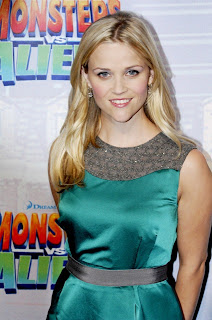Paula Abdul Eating Disorder
 Paula Abdul's eating disorder was bulimia. Paula battled bulimia and decided to check herself in a clinic, back in 1994.
Paula Abdul's eating disorder was bulimia. Paula battled bulimia and decided to check herself in a clinic, back in 1994.
Her negative feelings about her own body image came as early as seven years old when she started dancing, but "it didn't manifest into a full-blown eating disorder until I was in high school."
Today Paula Abdul is a spokesperson for the "National Eating Disorders Association". Paula courageously opens up about her own past battles, in hopes of encouraging young women to take the scary, but necessary, steps to seek help. "It is one of the toughest things to talk about, bar none, and it is one of the hardest disorders to deal with because it's not black or white. Eating disorders really have nothing to do with food, it's about feelings."
Abdul once thought nothing of sitting down to wolf down a whole cake, a bag of biscuits and a tub of ice cream. Then she would retreat to the bathroom and purge herself of the food.
Abdul was once also an exercise junkie, trying to burn off the extra calories she had taken in by over-indulging in food. "I used to be a fanatic," Paula admits. "I used to exercise four or five times a day. "Now it's different. I don't exercise too much for the wrong reasons. Three times a week I'll do some cardiovascular or aerobic activity.
"It became a living hell for me," Abdul stated. "I wanted to get help. I want to be free from weighing myself on the scales."
It has to be mentioned that "The National Eating Disorders Association" presented Abdul with its highest honor: the "Profiles in Living Award". So, the question is: "Is Abdul happy with the way she looks today?"
"You know, it's like any other girl," Paula declared. "I have my moments when I look in the mirror and say, "I'm okay." I refuse to weigh myself. I don't have scales in my house."
It has to be mentioned that "The National Eating Disorders Association" presented Abdul with its highest honor: the "Profiles in Living Award". So, the question is: "Is Abdul happy with the way she looks today?"
"You know, it's like any other girl," Paula declared. "I have my moments when I look in the mirror and say, "I'm okay." I refuse to weigh myself. I don't have scales in my house."
"I'd starve myself, then binge, then purge," states the 5'2", 105-lb. singer, wincing at the memory. "Whether I was sticking my head in the toilet or exercising for hours a day, I was spitting out the food—and the feelings."
Today, Paula reveals, her eating and exercise problems are behind her. A monthlong stay at the "Laureate Psychiatric Clinic "for eating disorders in Tulsa in 1994 helped give her the confidence to work out problems and fears with friends, family members and music-business colleagues rather than with her refrigerator.
Many of you may wonder: "How Paula Abdul's eating disorder started?"
When she was 8, Abdul started taking ballet lessons and comparing herself to other girls. "My friends were tall and thin," Paula quoted as saying. "I was short and round." It didn't help that her instructor used Abdul as an example in a discussion on anatomical variations. "She pointed out that my body was different," reveals Abdul. "I had such a feeling of shame. From then on I never felt right."
When she was 15, Paula received a scholarship to a dance camp near Palm Springs. There, in addition to training in ballet and modern dance, Paula learned how many of her long-legged teachers stayed so skinny. "They were all throwing up their food," states Abdul.
Shocked, Paula phoned her mother. "That's not normal," Lorraine told her. "Don't do that." Abdul didn't—for a couple of years. As a student at Van Nuys High School, she reached her full height—all of 62 inches—and weight: between 100 and 110 lbs. When she hit the higher end, she ate only salads and drank only diet soda. "A pound or two on a shorter person," Paula has told, "is very different from what it is on a taller person." Her parents assured her she looked good. It didn't matter; when she looked in the mirror, Paula saw someone fat.
One night when she was 16, after eating Mexican food with her cheer-leading squad, she returned home and did what so many of her friends had long done: she stuck her finger down her throat. "No one thought it was bad," claims Abdul. "Once I tried it, I felt it was an amazing way to control my weight."
One night when she was 16, after eating Mexican food with her cheer-leading squad, she returned home and did what so many of her friends had long done: she stuck her finger down her throat. "No one thought it was bad," claims Abdul. "Once I tried it, I felt it was an amazing way to control my weight."
By the time she enrolled at Cal State Northridge in 1981 with the intention of becoming a sportscaster, she was deep in the frenzy of a bulimic eating disorder. Either she binged and purged or spent up to 4 hours a day sweating off the calories she had consumed.
Paula Abdul's eating disorder, though, never was an obstacle to her career. During her freshman year at Cal State, Abdul tried out for the Lakers cheerleading team. The judges selected her from a pool of some 700 and within three weeks she was the squad's choreographer. She quit school six months later, but her career took flight. Abdul's high-energy, street-funk style delighted fans, including the Jackson family, who saw her at a game and hired the 20-year-old to choreograph a video for their 1984 "Victory" album.
In 1987 she used $35,000 in savings to put together a demo of herself singing. Though her voice was untrained, her moves were awesome, and in an MTV-driven business, she proved highly marketable. Virgin Records signed her the same year; by 1989 her singles "Straight Up," "Forever Your Girl" and "Cold Hearted" had all reached No. 1 on the pop charts. "It was a magical experience," claims Abdul. It was also more pressure than she had bargained for. "I remember, at a rehearsal for a TV show, I couldn't stay focused," Abdul reveals. "I felt nervous and out of control, and all I could think about was food. Food numbed the fear and anxiety. I'd eat, then run to the bathroom."
Paula is a member of "Overeaters Anonymous" since 1989. Abdul attended meetings three times a week with her husband's (Emilio Estevez) support. "He wanted what was best for me," Paula admits.
It was when Abdul wanted to get on with her life, Paula says, that she realized there was a problem in her marriage: children. Before they married, says Abdul, "I let [Emilio] know that I was very interested in having children." Estevez, already the father of two—Taylor, 11, and Paloma, 9—from a previous relationship with model Carey Salley, initially agreed, she says, but later changed his mind. "It was very hard for him to admit that he couldn't handle having kids again," she says. "It was heartbreaking for us both."
After many tear-filled but, Abdul says, civilized talks, the couple filed for divorce in May 1994. Abdul took the split hard. She couldn't concentrate, and for a while she couldn't eat. Then she couldn't not eat. "I was so sad, I just needed to be filled up," she says. "It was like I was trying to fill this big empty hole."
Though she stopped herself from throwing up, Abdul realized she was headed for trouble. "I felt totally not together," Paula says. "I was sad, hurt and frustrated, leaving the recording studio in tears. I knew I needed help."
Now Abdul feels very grateful to the lessons she took away from the clinic. According to her, the lesson she took are tools, not cures. "There are three things I commit to on a daily basis," Paula reveals. "Exercising for an hour a day, tops. Never skipping meals. And accepting the size and shape I was born with." Keeping those commitments is not always easy. "There have been many times when I sat and clenched my hands and said, "Okay, Paula, you're feeling really upset about what you just ate and it's not healthy. Get over it."
Paula Abdul's eating disorder was certainly not easy to battle, but she made it! The good thing is that Paula speaks honestly about her eating disorder and encourages people to seek professional help. The truth is that such eating disorders can't be overcome without an expert's help.
What do you think?
Photo credit: WENN
Feel free to comment and share this blog post if you find it interesting!













Comments
Post a Comment